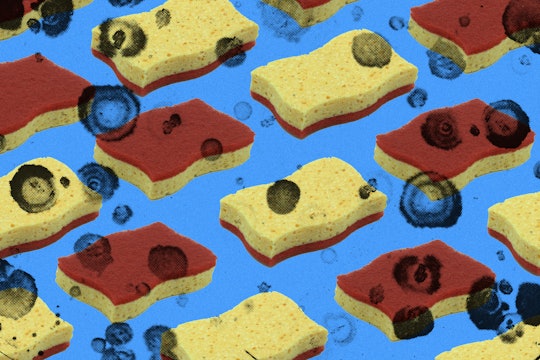
Why you shouldn't worry about the bacteria in your sponges
Remember that study about the 'dangerous' bacteria hiding in your kitchen sponge? Not so fast
Clocking in at just over half the microbial density of your own intestines, kitchen sponges are teeming, festering, living piles of bacteria. They are more densely colonized than other real estate in the kitchen, which is itself the most bacteria-laden area within the home. Yes, that includes the bathroom. That’s largely a product of sponges being moist and porous, with a high surface area for bacteria to populate.
Wiping that sponge on other surfaces – your hands, for instance, or the kitchen counter – can leave a trail of microbes in its wake. When a recent study suggested that cleaning your sponge can promote the growth of harmful bacteria, coverage went viral in no small part because most everyone has one sitting next to their sink. Now that the news cycle has moved on, let's take a collective step back and see if that fuss is merited.
First, we need to address that pretty much everything is covered in bacteria, including us. Scientists have identified over 100,000 unique bacteria, and the one thing they say for certain is that human microbiome diversity is highly personalized, even among healthy individuals. There is no singular microbial makeup we should all be aiming for. Importantly though, decreased overall microbial diversity is associated with certain diseases, in which one or a few species overgrow and imbalance the environment. Think of an algae bloom outcompeting fish and other plants for oxygen, leading to die-offs and disrupting the local ecosystem.
So back to sponges. A team of scientists from Germany sequenced bacterial DNA from 14 kitchen sponges, divided into two groups: those that were regularly sanitized by detergent or microwave treatment, and those that weren't. They found that regularly sanitized sponges had marginally lower total bacteria, but that they had a higher percentage of two types of bacteria, Chryseobacteria and Moraxella, than the uncleaned sponges. Chryseobacteria are very rarely associated with disease. Perhaps more concerning, Moraxella are associated with the smell of dirty laundry, but be honest: when is the last time you took a whiff of your sponge? Otherwise, Moraxella were previously identified on other kitchen surfaces as well as human skin, indicating that they might be a benign member of the human skin microbiome. The media coverage didn't appear to mention this.
Nor did it mention that the panic analysis doesn't even make much sense. The authors compared regularly sanitizing sponges to a course of antibiotics on the gut, which can allow resistant bacteria to repopulate the areas vacated by their weaker brethren. Antibiotics target bacterial proteins involved in growth and other critical cellular processes, to which bacteria can (and do) become resistant. But it is nigh impossible for bacteria to cope with extreme heat, which melts their proteins, or detergent, which blows open their cell membranes. It's not obvious that reusing cleaned sponges should render them any more susceptible to pathogenic bacteria.
.jpg)
If there's a problem with this, the sponges aren't it.
What if your sponge came into contact with something truly pathogenic, like raw meat or mold? Previous studies showed that sanitization, especially heating in the microwave, can significantly reduce active cultures. In the latter study, the sponges were sourced from restaurants and school cafeterias, where transmission of pathogenic bacteria is of greater concern because of expanded opportunities for cross-contamination. However, a five-minute microwave exposure completely eliminated all traces of Staphylococcus and Salmonella from the sponges. The authors of the present study did not detect pathogens associated with foodborne illnesses, such as Salmonella, E. coli, or Staphylococcus in any of their samples, regularly sanitized or not.
The microbiome sequencing age is upon us, and we are bound to see more studies detailing bacterial diversity in domains both natural and human-built. The sponge study provides a first-of-its-kind detailed analysis of the sponge microbiome with a bit too much hyperbole on the risk factor of some smelly bacteria. So wash your sponge or throw it out and replace it. Either way, it'll eventually be drenched in microbes. Perhaps instead of responding with alarm or disgust, we should simply marvel at the richness of the bacterial world we live in.
